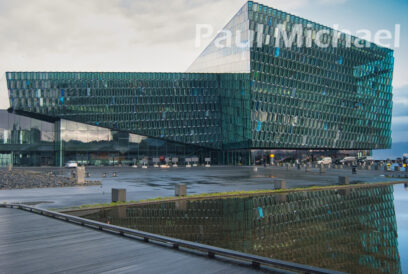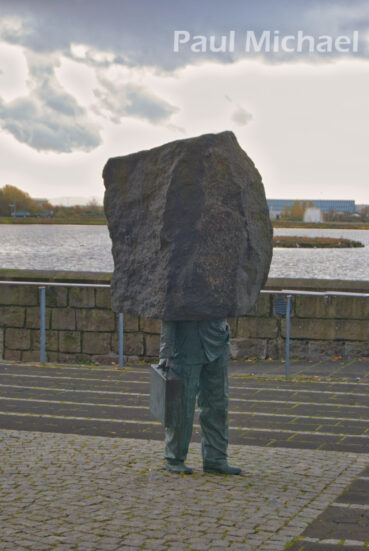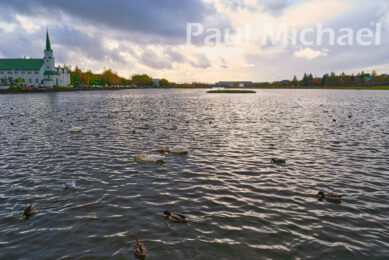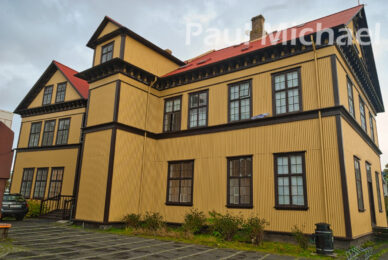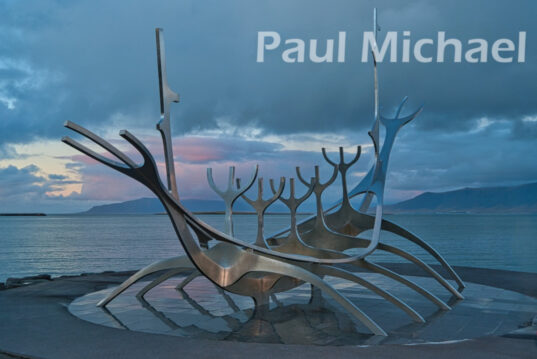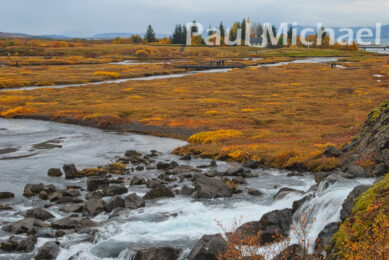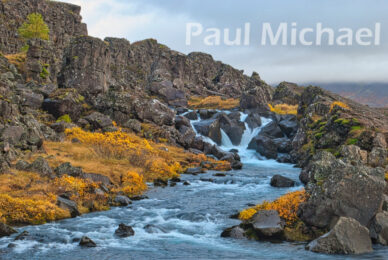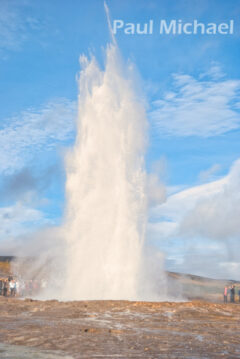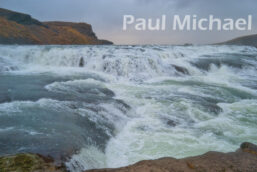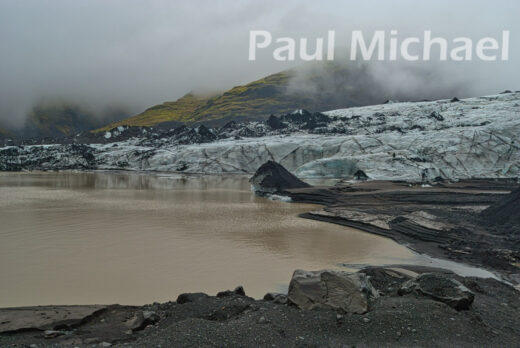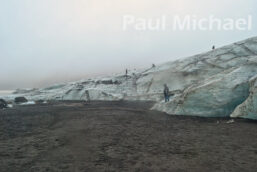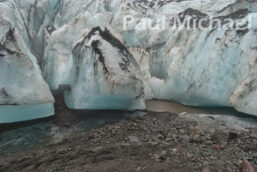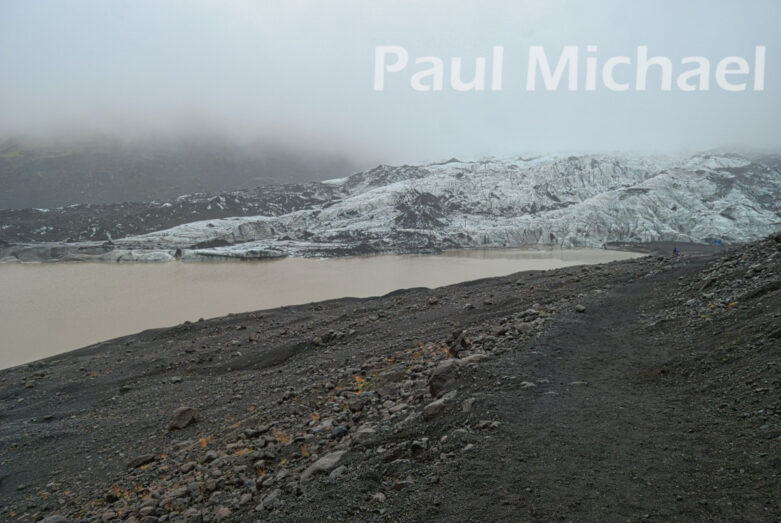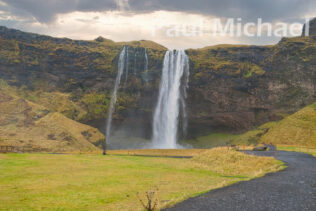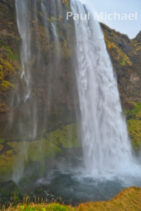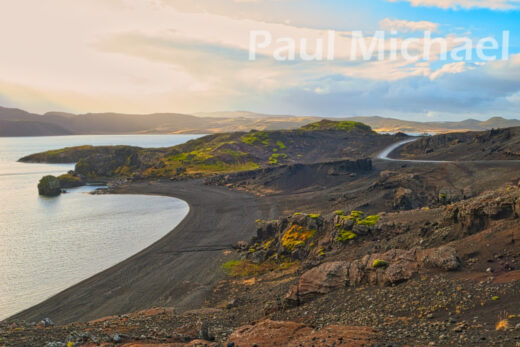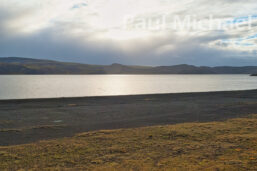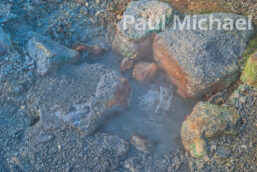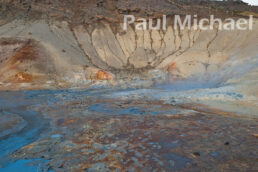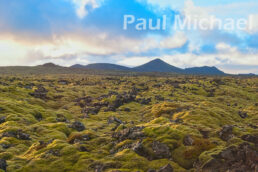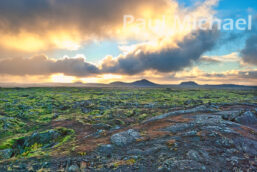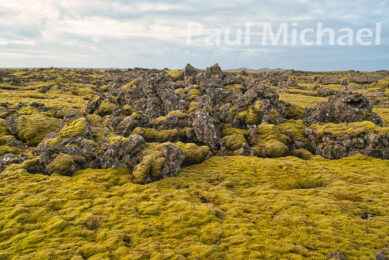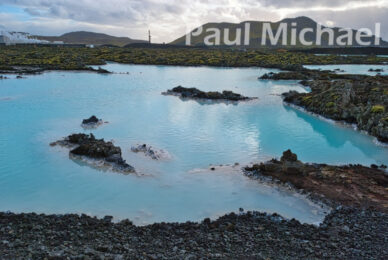Last Updated on 9th November 2023
It was on my bucket list and I had yearned to visit Iceland for several years. I finally got to go with my wife, but that was back in 2015! So, after a lengthy delay, here is my guide to visit Iceland.

Why Should I Visit Iceland?
For me, as a landscape photographer, that’s an easy one. Iceland has the most diverse and unusually beautiful landscapes I’ve ever encountered. Not that I’m an experienced world traveller, but more that I was completely blown away by the richness of the varying terrains. I read lots of photographic magazines and I reckon there is at least one photo from Iceland in every edition every month.
You can drive south of the capital, Reykjavik and see not just one but two or more dramatic changes in terrain and scenery. Drive east and you’ll see something completely different again.
Reykjavik is quite a small city for Iceland’s capital, but it is architecturally stunning. The main shopping area has different building designs, each with its own unique style and decor. Then there are some pretty impressive buildings I’ll introduce further down. The shoreline and harbour take on a different look and feel depending on the weather, which ranges from tranquil and calm to raging and stormy throughout the seasons.
Is Iceland Expensive to Visit?
The currency of Iceland is the Icelandic Krona. Roughly, £6 is equivalent to ISK1,000.
Iceland can be pretty expensive – both the travel and day-to-day meals. In writing this guide, I considered if I could do today what I did back in 2015. I organised the flight, hotel and hire car independently through sites like Expedia, which was less expensive than a package deal. While it still looks to be the more economical way to do it, the prices have certainly gone up. I explain this below.
Food and drinks are very expensive compared to UK prices. As a rule of thumb, expect to pay double the amount for fast food, pub or restaurant food, along with beers wines and spirits. Otherwise, groceries tend to come in at 40% to 60% more. Fuel for the hire car will be about 20% more.
Iceland is a big importer of produce, which is why the costs are higher. If you live there, your wages would be matched to these higher costs, but if you are visiting from less costly countries, you’ll feel the pinch.
How Many Days Is Enough to Visit Iceland?
Well, that depends on what you plan to do. If you want a Reykjavik city break, you could probably do this over 2 full days. That might mean a 3-night stay depending on your flight times.
If you plan to see some of Iceland’s interior, you would need at least 4 full days or 5 nights.
My wife and I stayed for 7 nights, which was just about right to see all that we had planned, along with some things that I hadn’t planned, but my wife thought I had! There’s more about this below.
When to Visit Iceland
We went for a week during October, which is nearing the end of the autumn tourist season. It gets colder and the days are short from November onwards, so I would steer clear of the winter months. October temperatures are typically 8 to 10 degrees (C) in and around Reykjavik and low-country areas. It gets colder as you ascend into the hills.
It is really down to your own preferences as to when to visit. During the summer you may get to see migratory puffins at the coastal locations. This may also be best for visiting the northern territories where it can get mighty cold in the winter months. One possible problem: it stays light 24 hours per day- the midnight sun. It’s great to see this but may take a bit of getting used to for some. There are also far more visitors in the summer months, so the main tourist places can get very busy. This also pushes up the prices of excursions.
Getting to Iceland
What to Take
As well as all the usual holiday gear, consider some of these items…
Stout shoes or boots and warm weatherproof gear. If you are planning excursions out into the wilderness, you need to dress sensibly. There is no such thing as bad weather, just bad clothing. If you are going in the autumn or spring months it will be sometimes colder and icy wet. During the summer, it will likely be a bit warmer but it still rains and can turn cold. While all this can be weighty, think about wearing it on the plane to keep within your baggage allowances.
Swimwear for visiting the Blue Lagoon and any of the wild and natural geothermal pools. A hiker’s towel or gown would be good too, although you can hire a towel at the Blue Lagoon.
A camera is a must. Whether it’s your phone or a dedicated camera, bring chargers, battery packs, and spare batteries, along with your usual camera gear. Also, consider an in-car charger for your phone if you use it as a SatNav.
Power Adaptors – Iceland has the same Type C and F plugs as used in most European countries.
Package Tour or Do It Yourself?
Back in 2015, it cost £850 for a week for two people flying from Birmingham to Reykjavik, a hire car and staying in an apart-hotel, Hotel Hafnarfjordur (no longer available on the usual travel sites), that included breakfast. I have to admit, I was pleased with myself managing to get it all for this price, and I did wonder if the hotel was going to be sub-standard. No worries, it was very comfortable and clean with a small kitchen area. Breakfast was buffet-style, which was actually really beneficial to start the day before heading off.
Looking on the Expedia website today, the cheapest they have for heading off from Birmingham on the 23rd to 30th of October 2023 is nearly £1,200 for two adults for a room-only apartment. This doesn’t include a hire car. Kayak were much the same. Easyjet is similar, but flying from Bristol.
So, no, I can’t get anything near the price I paid, inflation considered. It seems that all prices have increased considerably.
Secret Escapes, as an example, do a 7-night package tour costing around £2,200 for 2 adults on the same date. It includes a Northern Light excursion, but you will need to pay more for any other excursions you require. It includes breakfast, so you will also need to pay for lunches, dinners and refreshments.
If you consider that many of the splendours to visit in Iceland are free, you can see that a hire car has its benefits. However, if you are not able to drive, for whatever reason, then a package tour is likely the best option.
Self-drive
Having arrived at the airport, we picked up the hire car. As I now realise with hire car companies, they always put a dampener on your holiday excitement. They wanted us to take out their special insurance. To really push it, they warned over and over about the bad road surfaces in Iceland and that the car would likely be damaged from stone chips. Their insurance covers everything. We didn’t take out the insurance, and the ordeal put my wife and I in a very different mood. We took photos of the car inside and out and then headed off.
Hot tip: Buy excess waiver insurance independently to cover the dates of your stay. It is far cheaper and does the same job. The insurance that the hire car company provides covers all the other eventualities. I wish I had known that back then.
A SatNav is an essential bit of kit in my opinion. I had a phone app version back in 2015 and it was great. Today, there is Google Maps and it’s likely that the Waze app will also work in Iceland. The HERE-Wego app is good too – you can download the Iceland maps before you travel to use the app offline. That’s a must given that you’re unlikely to get a phone data signal in many parts of rugged Iceland.
Icelandic roads were not too busy in October, so the journey to our hotel was good and fairly straightforward. Icelanders drive on the wrong side of the road, as with Europe.
A Few Quirks of Iceland
Every country has its quirks, right?
Upon arrival at the hotel, one of the first things you’ll notice is a rather pungent smell when running a tap. Not to worry, it’s sulpher, which smells a little like rotten eggs. Iceland has active volcanos and geothermal springs that are on the watercourse paths. You get used to it after a day or two, but some restaurants and cafes burn candles to hide the smell.
Our first visit to a supermarket got us everything we needed. However, upon getting back to the hotel and ready to sample some Icelandic beers I had bought, it soon became apparent that there was a distinct lack of alcohol in them. I later found that wines, spirits and beers are sold at off-licences. The trouble was, back then, I could never find an open one.
For English speakers and maybe other languages, Icelandic appears complicated. Many place names will appear unpronounceable to many. However, many Icelanders speak good English and are very helpful and welcoming. If you are heading off for the day, write down the places you want to go to. You can then at least point to a place on your list if you need directions or help.
Among the many sights you will see when travelling out to the more remote locations are geothermal springs. We saw quite a few that were along the roadside, as well as the listed ones on tourist maps. As a local advised: don’t be tempted to dip your fingers in the water to feel the temperature. It will likely scold you and you are miles from any hospital. There are many dangers in Iceland, it’s really a case of being sensible and taking care of yourself and your loved ones.
Many Icelanders believe in fairies and mythological creatures. It’s part of their culture. As much as it may seem strange, as one lady shop-keeper at Skogafoss (see below) reasoned when explaining this: no wars have erupted over a belief in fairies! I take her point. Expanding on this theme, you’ll see quite a few Christmas shops in the larger towns. Elves, pixies, fairies – why not for adults too?
What to Do and Visit in Iceland
It’s actually difficult to know where to start. One thing is for sure, the list below is not in any order of merit. You could do these in any order, picking and choosing what suits your taste. Neither is this list exhaustive. These are what we experienced.
Reykjavik
Iceland’s capital city, as mentioned, is small but, I suggest, a must-visit. You could do with a couple of days here to visit all it has to offer and soak up the delights of this magical city.
We stayed a little out of town to the south, so we bought a pass and hopped on a bus. It took the coast route to the city centre, and we were able to get off by the harbour. There was a mix of the old and new boats around the harbour and its docks and slipways.
A little further around is the amazing Harpa Concert Hall and Conference Centre. We were able to wander into the building’s main public area for a look around.
The main street of the shopping area is Bankastraeti. It is marked by the Government Offices being located on the left at the bottom of this street on a rising hill. We were hungry by now and on the lookout for some food. We found a bar-styled restaurant and went it. The man behind the bar said we had missed the main food service, but they had two flavours of bread soup on offer. It was soup served in a bloomer that had been scraped out, but you then had the soft scrapings to dunk into the soup, as well as the bread it is served in. It was absolutely delicious, and filling!
The Tjornin lake is located in the heart of Reykjavik and makes for a lovely walk around it. There are some really interesting buildings with amazing architecture around the lake, as well as some interesting statues.
Further up the hill and to the right along Frakkastigur is the famous landmark church, Hallgrimskirkja. You will see its magnificent spire above the rooftops on the left as you continue up the hill. This is such an impressive building of the most unique style and architecture.
We walked back towards the coast from the church. This took us to the main business area with lots of offices and hotels. As we walked along the coastline back to the harbour we stumbled upon the Sun Voyager, a sculpture of a Viking boat. When we arrived, it was about 7pm and the sun was setting. How apt! It created such a stunning background over the waters to the hills beyond.
There is much more to discover in Reykjavik. We came back a few times over the 7 days of our visit. On each occasion we found something we hadn’t seen and, in some cases, out of the ordinary. See if you can find the small fairy and elf park!
The Northern Lights
Iceland is one of a few countries to almost be sure of seeing the Northern Lights. At the time of writing this, people in Cornwall were getting some pretty spectacular displays. So it’s not essential to go as far as Iceland just to see the Northern Lights.
It’s a lot of luck with some judgment thrown in. The many tourist firms that arrange Northern Light excursions must have a good idea of whether or not the Lights will make an appearance on a given day.
We got to see them on our first day. I mentioned the sun setting over the Sun Voyager sculpture above. Well, that’s a clue! If the skies are fairly clear, there is a good chance the Northern Lights will come out to play later on. We travelled back to the hotel on the bus. When we got off, we both noticed the sky had changed a weird colour. We soon discovered it was a mix of the orange street lights with the now green tinge of the skies behind.

All I could think to do was to get into the hire car and head out to a westerly point I noticed earlier on the map. My photos are not great, but we both got quite emotional having seen the wonderful displays for the first time. In hindsight, we should have stayed put on the coastline of Reykjavik and got a later bus.
The Blue Lagoon
The Blue Lagoon is a man-made phenomenon that uses the by-product of already heated water from a nearby geothermal power station. The heat from an underground lava flow superheats the water to drive a turbine and generate electricity. The second stage is to provide hot water for people to use in their homes. The third stage sees the cooling water flow into the Lagoon, which has an average temperature of 38 degrees centigrade.
The waters of the Lagoon are rich in minerals. The white clay-mud-feel of silica that lays on the Lagoon bed is what gives it the startling turquoise colour. The other main minerals are salt and algae.
It is expensive to visit, around £50 each, but is it worth it? Yes, I really do think so. We stayed for the day and spent even more money by eating there as well. It closes well into late evening, which would be quite an experience. The price includes the use of a towel, a mud mask plus a drink on the house. There is an enhanced admission that offers two more face masks and bubbly with your meal. Read more about it and prebook your tickets directly from the Blue Lagoon. I booked our tickets when we were in Iceland.
If you are travelling from Reykjavik or maybe from the east, look out for the terrain around this area. It’s like a bright green moss-like plant growing on centuries-old lava fields.
The Blue Lagoon site has listed a number of nearby attractions to visit, either on the same day or another day.
If you want to see a similar church to ‘That Church’ that you see in practically all photographic and tourist magazines and papers, it’s around 20 minutes due south of the Blue Lagoon. It’s called Grindavíkurkirkja eldri. That’s easy for you to say! The one that is the most photographed in called Vik i Myrdal Church and is located at Iceland’s most southerly point.
The Golden Circle
A 190-mile circular route from Reykjavik takes in numerous key historical and geological sites. There are many tour operators that operate day excursions, lasting for about 7 hours. They will pick you up at your hotel or popular locations in Reykjavik. You can also do this by public transport – just about. A hire car is much more convenient because you can spend as much or as little time at each place as needed. You can also add or remove locations, and even stop to investigate what you see along the road.
PinGvellir
Meaning ‘Assembly Plains’, Pingvellir is the site of Iceland’s first parliament (Alpingi) and was established in 930. Today it is a national park of geological significance. You have to use your imagination somewhat to picture how things were back in the day.
People would flock to participate or watch the dealings of parliament 1000 years ago. There was plenty of room for people and their horses and carts. There was a lake stocked with fish and plenty of water.
When parliament judged on wrong-doing or outlawry, the punishment was set by the wronged party. Parliament had no power to enforce this and, sometimes, feudal wars could break out where the wrong-doers hadn’t settled the score. Eventually, courts were established and gained much more power in such matters. Pingvellir became a site of execution for the more extreme punishments. 1798 saw the last meeting of parliament on this site.
This is also the site of where the North American and the Eurasian continental plates meet. They are actually drifting apart by 2cm pr year. So, in just a step and you can be in a different continent.
There is a visitor centre and cafe at the site.
Geysir
One of the few Icelandic words that made it to world language, the original Geysir or Geyser is located some 40 miles NE of Pingvellir.
What was once a magnificent display that often reached 60m in height, sadly, is no more. It still erupts, as it used to for decades, but irregularly and not much higher than 10m.
Thankfully, there is still an impressive smaller geyser on the same site: Stokkur, meaning ‘the churn’. This one spurts 20m high every couple of minutes.
The whole area is riddled with bubbling mud patches and steaming holes. There are well-marked walkways around the site.
I have warned already – don’t touch or put your fingers where you shouldn’t! Around 7 tourists get badly burned every WEEK in the summer months!
Gullfoss
Just another 4 miles north along the road is Gullfoss, meaning Golden Falls. This is an absolutely amazing site of natural beauty and power. So much power that it was originally earmarked for a hydro-electric power station. Thankfully the government bought the site and made the falls a national monument.
There are two falls that drop 32m where the water cascades in thunderous tones to the canyon below. You view the waterfalls from above. You can’t help being overwhelmed by the site of it as you walk along the pathways and get ever-closer. In fact, you get very close indeed.
You’ll need wet-weather gear – you are going to get wet! There’s a fine mist spray for quite a distance before you get anywhere near to the falls themselves.
Read more about Gullfoss including when to visit, safety tips, facilities and pretty much anything else you need to know before visiting.
There is folklore associated with the river a little upstream of the falls. It’s of a man who farmed and cared for his family’s livestock on one side of the raging rapids, and a girl on the other side who cared for her family. They spent their days shouting love messages across the expanse. He kept to his side of the bargain and crossed the river to seal his love and engagement with the girl he fell in love with. They lived a happy life. There are variations of this story, and some don’t end as well.
Solheimajokull Glacier
In our hotel room near the end of our wonderful holiday, my wife says, ‘when are are we going to visit a glacier?’
Now, that was a problem because we had completed the itineary that I had planned before the holiday. So, out with my phone and into the search engine, I found a glacier on the south coast. The writer of the article I was reading described it as “a glacier you can touch with a Yarris”. Well, that suited me because out hire car was about that size.
It’s actually the tongue or peninsula of the very expansive Solheimajokull Glacier. It’s around a 2.5 hour drive (165km) from Reykjavik, so an early start is advised to make the most of it.
Note: there are excursions to this glacier and organised walks on the glacier itself. Our visit took in the glacier lagoon and up to the wall of the glacier. The advice is not to climb onto the glacier without proper equipment and a guide.
Off of the main road and onto the track that leads to the glacier, you arrive at a car park. There looks to be nothing there. Two girls arrived at the same time as us and, in jovial conversation, we wanted to see a glacier, they wanted to see a volcano!
Luckily, we spotted the visitor centre and cafe. After a long drive, refreshments were very welcome. They had a theme of black napkins and candles when we visited. Very unusual, but the cakes and coffee were delicious. Sure enough, there were route maps and there was a glacier and, further on up, if you want it, there is a volcano too.
It is a 5 minute walk along a volcanic ash path to the start of the lagoon. It’s another 10 minutes to the wall of the glacier. As you walk you can see that you are actually walking on ash covered ice. In reaching the wall of the glacier, we were fascinated by the aqua colours of the ice. There were cave-like openings where melted ice flows out from the glacier. We were mesmerised by the sheer size and power of just that sliver of the main mass of the glacier.
The safety note that I put above, yes, we saw people clamber up the glacier wall and really struggle to get back down again. One of them looked to have hurt themselves when they slipped off.
Skogafoss
Skogafoss Waterfall can be visited on the way back from the Glacier.
The river Skoga, itself formed from a smaller glacier, once flowed out to the coast. Today, the coastline has eroded some 5km back. The water now falls from the cliff some 60m above. With width of 25m, it is one of Iceland’s largest waterfalls.
There is a cave behind the falls in the cliff and, legend has it, there is buried treasure placed there by the first Viking settler.
There are some facilities at the site, including a lovely Icelandic Jumper shop. This is where we met the shop-keeper who told us of the elves and fairies that many Icelanders believe in.
Reykjanes National Park
This was Day 6 for us, and a relaxing tour around this intriguing landscape. After a short while, the road we were on started to turn more gravel track than road. Yet, the satnav advised to keep going. We actually stopped for a while and watched a few cars going and coming from the direction we were heading. So we carried on. As the trail went through a pass between two hills, it merged into a proper looking road and came out onto the volcanic lava shores of a waterway.
Black Shores
See the volcanic black shores along the road in this unbelievable landscape. We stopped along this stretch of road a few times to take in the magnificent scenery. The skies were dramatic as well, to add even more drama.
Seltun
Seltun is a place of hot springs. It has paths, boardwalks and bridges all over the site to explore this geological phenomina.
It’s a very barren area due to the natural chemistry of this place. Water falls down from the surrounding landscape, down into the ground and is heated by magma. As it heats, substances from the rocks are dissolved. Once it boils, the steam gases release carbon dioxide, hydrogen and the rather smelly hydrogen-sulphide. Where these steam vents emerge from under the surface water and pass through, sulphuric acid is produced. This increases the acidic levels in the water. So, it’s hardly surprising that not much can grow here – except minerals and elements.
As we had circled around, we once again came to Reykjanes National Park. This is the location of the Blue Lagoon and where we stumbled upon the church I mentioned above. The weather was a bit better on this visit and we wanted to capture more photos of this strange landscape.
Completing the Visit
That evening, we treated ourselves to a hearty meal for our last night of Iceland. Breakfast the following morning was lengthier than usual, as we just needed to drive to the airport.
Returning the car, complete with a full tank of fuel, was a much better experience. Just a cursory glance by the chap who checked the car in and we were on our way into the airport terminal for the flight home.
Places to Stay
There are so many places to stay in Iceland and, of course, it depends what area you want to visit. I recommend staying around Reykjavik so that you can get the best of the city and interior visits.
Look at these hotels and holiday properties in and around Reykjavik.
As mentioned, there are plenty of tour operators that can organise a packaged or bespoke holiday for your requirements.
Comment below with your experiences of visiting Iceland.

